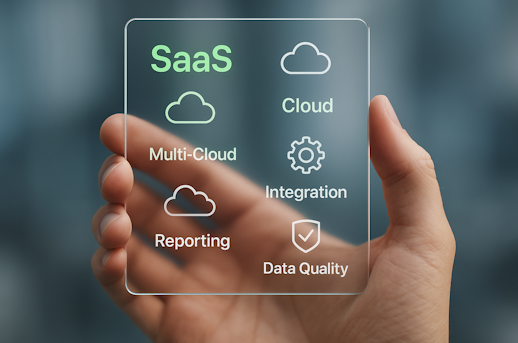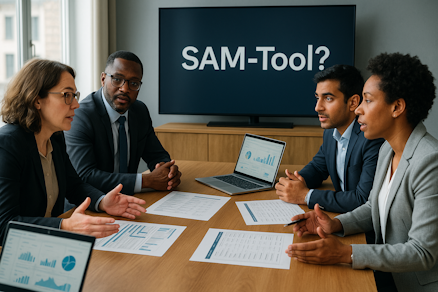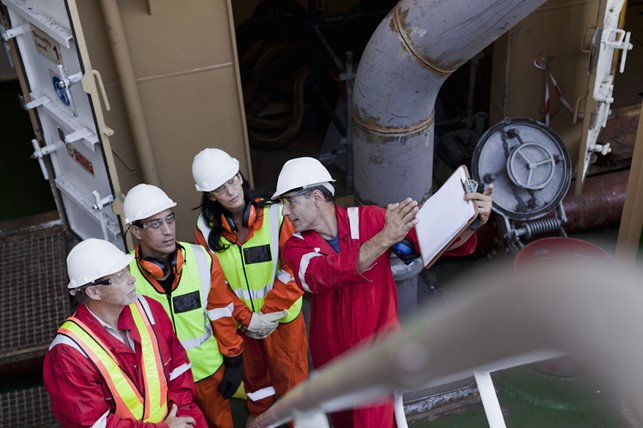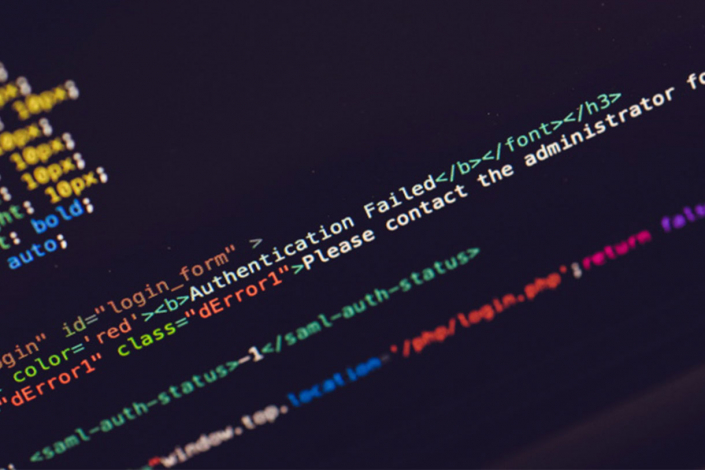 https://samtoa.de/wp-content/uploads/2024/05/Bergsteiger-angeleint_Microsoft-Office.jpg
343
482
Wolfgang Stratenwerth
https://samtoa.de/wp-content/uploads/2020/10/samtoa-license-experts-logo.svg
Wolfgang Stratenwerth2025-09-25 14:10:562024-05-28 14:09:49Converting SAP ECC Licenses to S/4HANA: A Guide for SAP Customers
https://samtoa.de/wp-content/uploads/2024/05/Bergsteiger-angeleint_Microsoft-Office.jpg
343
482
Wolfgang Stratenwerth
https://samtoa.de/wp-content/uploads/2020/10/samtoa-license-experts-logo.svg
Wolfgang Stratenwerth2025-09-25 14:10:562024-05-28 14:09:49Converting SAP ECC Licenses to S/4HANA: A Guide for SAP Customers1. Introduction
Are you wondering about SAM tool selection and which solution suits your needs? And what will really matter in a SAM tool in 2025?
The short answer: it matters more than ever before. The more detailed answer: everything that has changed since the rise of the cloud, SaaS, and hybrid IT structures.
Gone are the days when it was enough to simply know what was installed. Today, it’s about who uses what, how often, where, and why. In many companies, it’s no longer just “one version” of software that’s running. Instead, there might be five versions running simultaneously, each purchased and paid for in different ways. The overview has long since been lost.
This article explores where classic selection criteria fall short and what really matters today.
2. Old Standards That No Longer Apply
Software asset management used to be simple: install the SAM tool, record installations, assign licenses, take inventory. Done. This approach still works today, but only for systems that run locally, change infrequently, and are completely understood. Such systems are rare nowadays.
Cloud solutions bring new rules to the game: you no longer install anything, you subscribe to it. You no longer pay a flat rate, but according to modules, usage, storage, and region. Vendors are constantly busy inventing new pricing metrics.
I remember a customer project focused on a SaaS provider. I asked, “How many licenses are being used?” The answer: “It depends.” “On what?” “Well, on the region, the product package, and the login time.”
A “classic” SAM tool can’t handle that complexity.
Anyone who only counts installations today is missing a large part of the picture: Atlassian? Invisible. ServiceNow? Hardly measurable. Salesforce? Maybe, if you’re lucky.
And anyone who treats SaaS as a side issue will quickly realize that it becomes the main expense—at the latest when the bill arrives.
Contracts also work differently: instead of fixed license models, subscriptions, modules, and API calls now determine costs. Traditional selection criteria have long since become obsolete.
3. How Cloud and SaaS Are Really Changing Things

3.1 Focus on people instead of machines
Today, SAM means maintaining control despite constant change. And the change is radical. The question is no longer: “What is running on which computer?” But rather: “Who is using which app and how intensively?”
SaaS is user-centric. Licenses are tied to users, not devices. Modern SAM tool selection must prioritize solutions that recognize this across all platforms: Microsoft, Adobe, Atlassian – the entire mix.
3.2 Subscriptions instead of purchase agreements
Many licenses can be cancelled monthly. Payment is based on modules, users, storage, or functionality. Without proper oversight, you end up paying for accounts that nobody uses. Unfortunately, this often only becomes apparent during an audit or annual review.
3.3 Nothing works without an API
Data no longer comes from the client, but directly from the SaaS provider. And they only communicate via APIs. If you don’t integrate properly here, you won’t get reliable data. Period.
A good SAM tool needs not only classic interfaces to on-premises installations, but also stable connections to numerous cloud providers.
3.4 Shadow IT is growing faster than expected
Departments subscribe to tools without involving IT or going through procurement. The result: no central oversight, no strategy, but higher costs. A SAM tool must identify what is running “under the radar.” Otherwise, budgets will spiral out of control.
4. New SAM Tool Selection Criteria

Anyone selecting tools today needs to ask different questions. Here are some that we regularly explore in our projects:
- Can the SAM tool handle SaaS effectively? Does it monitor Microsoft 365, Salesforce, and AWS consistently, not just sporadically?
- Does the SAM tool work in a multi-cloud environment? Can it operate simultaneously across Azure, Google Cloud, and Amazon Web Services?
- Does it identify who is using each application? Are roles, permissions, and user relationships clearly mapped and tracked?
- Can it be integrated seamlessly? Into workflows, ITSM systems, and procurement processes? Or does everything remain manual?
- Is the reporting actionable? Can I present meaningful insights to management and different data to procurement teams?
- How reliable is the data and what’s the maintenance overhead? The more manual work required, the less scalable the solution becomes.
And perhaps the most crucial question: Is the SAM tool a ready-to-use solution or an ongoing project?
Conclusion: Test thoroughly before making a decision. Define your requirements clearly. Never assume that the tool “will handle everything automatically.”
Taking a realistic approach to SAM tool selection
Many people believe that the right tool will solve their problems. But tools don’t solve anything—they only reveal what isn’t working. A SAM tool is not a magic solution. It’s an amplifier: it amplifies good processes and bad ones alike.
Especially in cloud environments, it’s worth asking: What should the tool actually accomplish? What needs to be defined by humans before it can capture anything meaningful? And who will work with the data daily—not just for the annual report?
Professional consulting can help. Not because SAM tools are overly complicated, but because in reality they rarely perform as demonstrated in marketing brochures and polished demos.
Conclusion: SAM tool selection in 2025
The rules of the game have fundamentally changed. Anyone who still selects SAM tools using 2018 criteria will face significant challenges by 2026.
Three questions help guide this transformation:
- Which cloud and SaaS services are we currently using? And how rapidly will this portfolio continue to expand?
- Which data do we actually need? Where should it originate from and how frequently should it be updated?
- What exactly should the SAM tool accomplish? And equally important—what should it not attempt to do?
Organizations that thoroughly address these questions not only make better decisions but also avoid considerable complications down the road.
Do your selection criteria align with the reality of cloud and SaaS environments?
Or are you still basing decisions on IT infrastructures that may already be obsolete?
If this sounds familiar, talk to us.
SAMtoa. Your partner for SAP licence management and software asset management.
The Author
Peter Piechota
License Analyst at SAMtoa





 COPYRIGHT Fotos auf Lager von Vecteezy - https://de.vecteezy.com/
COPYRIGHT Fotos auf Lager von Vecteezy - https://de.vecteezy.com/
































